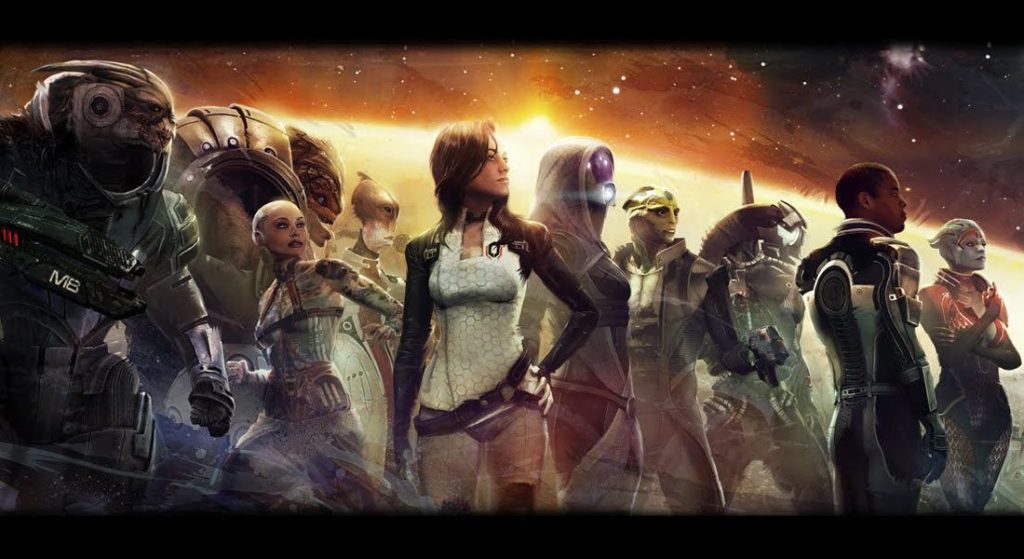
The Setting / Plot Connection
Science fiction and fantasy are particularly ‘premise’ based genres. What if magic? Then Harry Potter. What if space magic? Then Star Wars. What if humanity got its act together? Then Star Trek. As these premises are the setting where we start our story, these genres depict stories that occur in very different settings than in other genres. Generally in storytelling, the most satisfying and memorable stories are those that galvanize all elements of the story (characters, events, etc) towards the telling of that story, including setting.
We often forget about capitalizing on the interactions between setting and plot in other genres because the setting is ‘natural’ or ‘normal’. We barely notice the setting because we (and our characters) react so naturally to it. We forget that the way those reactions happen is based in large part on our environment. With historical settings, we think in terms of ‘historical accuracy’ and make sure characters react in ways that match historical documents. But both modern and historical stories are merely particular cases of a more abstract understanding of how setting and plot affect each other.
The fact that we rarely need to think this interaction through in other genres, because it comes so naturally to us, means that storytellers often fail to properly take advantage of the setting in science fiction and fantasy when it comes to designing their plot. Placing a story line in non-descript fantasy universe or on a space station because ‘it feels cool’ or ‘I like space’ leads to stories that feel forced and are often forgettable.
Why Why Why
Creating a deep connection between the setting and plot is by no means required, but it does help create better, more compelling stories. Characters’ actions will seem more believable when they are in concert and in reaction to the forces around them. Setting gives a context for actions. If X wants to show Y their romantic intentions, X could buy roses for Y. We know this action makes sense because, in our world, flowers are almost universally a sign of beauty and a common gift relating to romance. If X and Y are space slugs on a planet where geodes are a dominant display of beauty and affection, then a flower would make no sense. The flower makes sense because of the setting of Earth in the last few thousand years. This setting is often invisible to us because it is so natural.
The interaction based around a flower or a geode may seem like set dressing, but perhaps going out to a store to buy a flower leads the main character to the next plot point in the story. Do space slugs have geode stores or do they have to dig the stones up themselves? Every action and plot point is dictated by setting in some way. Thus, every story is fundamentally tied to its setting.
But wait, what about 10 Things I Hate about You, you say?[1] Taking a known story and moving it to a different setting is a common device in media. In 10 Things I Hate about You[2], Shakespeare’s Taming of the Shrew is translated to a modern day setting. It is not, as it is commonly described, retold. Translated is a more appropriate term because, in order for any of the characters’ actions to make sense, they have to be recontextualized to fit the new setting. Cultural and societal norms of the late 1500s did not survived into the late 1990s.
For example, let’s try to put King Lear in space. In order to have anyone’s actions make sense we need to find ways to set certain societal expectations into our new setting:
- Strongly hierarchical society: King Lear and his family are able to act relatively independent of general society because they are the monarchy and aristocracy. Even today, the basic rule of law confines the actions of even autocratic leaders in ways that would make the King Lear story impossible.
- Ownership over entire countries: King Lear divides his kingdom among his daughters in such a way that it leads to all out warfare.
- Patriarchal control: Several characters in the story are only relevant because they are married to King Lear’s daughters. Why should spouses have such political relevance in a future setting?
- Easily forgeable communications: In the future, one assumes one might be able to verify vital pieces of information by communicating via various formats, checking news outlets or visiting people directly with advanced transportation.
- No checks for ruling powers: After apparently going insane, Lear is asked to resume his rule as king. The only thing stopping this resumption is his own death. One would assume that in a more advanced society, such a situation would be prevented by various safeguards.
- Easily induced warfare: France invades Britain in order to reinstate Lear as king. That any large-scale political power would invade another so quickly and for such a purpose is becoming increasingly rare and would seem only stranger in the future.
Hall of Fame
So let’s look at a few examples where storytellers have connected setting to plot well so we can see the value of this interaction:
Mass Effect

In this universe[3], the galaxy is home to many races connected by a set of technologies left behind by an unknown ancient civilization, later found to be the Reapers. The entire plot revolves around the slow unveiling this technology’s origins. The particular interactions of the races are influenced by the existence of the technology; the races that have the most political influence are the ones that found and used the ancient technology earliest. Trade and politics are heavily driven by where in the galaxy ancient travel nodes are found. Everything in Shepherd’s life is influenced by how the galaxy is setup in very practical ways, both high level and in every day interactions.
In fact, Shepherd is the main character, not because they are the ‘chosen’ one, but merely because their personal circumstances drives them to be involved in the plot. Shepherd is a human who is rising through the ranks of the human military at a time when humans are gaining greater influence on the galactic political stage. Humanity’s rise in the galaxy contributes to the Reapers initiating their genocide of the galaxy, which becomes the plot of the games.
Thus, Shepherd is the main character precisely because someone in Shepherd’s position logically would be pulled into an investigation into the Reapers’ plots. The plot and setting are in harmony, which makes suspension of disbelief easier, making the story more compelling and satisfying for the audience.
Mass Effect is one of the best examples of this synergy available and the franchise keeps it up through all three of the main episodes.
This is doubly impressive because sequels are a common place for the setting and plot to go into disharmony. Often, the plot of an initial episode works well with the setting and the story line concludes itself in a logical, believable way. But the setting may make it difficult to continue the story with the same characters in a logical way. So, in order to keep the franchise going, they have to force new plot lines that don’t harmonize with the setting. Good job, Mass Effect story team!
Dune

In Dune[4], all modern technology is driven by a substance called spice. Spice is only created on one planet so of course controlling this planet is the main conflict in the story. All technology and power is related to this planet, so the conflict centering there feels consequential and satisfying to the audience. Many of the actions people take are possible due to the powers given by this spice which makes the existence of the spice feel meaningful and impactful rather than a mere unobtainium or MacGuffin.
What makes Dune an interesting example is that the story connects the setting and the plot in a logical way despite the logic of the universe having some holes. Everyone’s obsession with the spice planet makes logical sense. But in any universe where spice was so important, one would expect that people would be researching how to ‘farm’ spice on other planets or that the plot would follow more of a corporate espionage bent. This illustrates that one does not need to be ruthlessly logical. Rather, a good story has the plot and setting in harmony while allowing plot holes or ‘setting holes’. Many fictional stories fall apart when viewed too closely and this does not change their quality as stories. The framing of the plot and setting focuses the audience on what is important in the telling of the story, so the audience is not distracted by these holes. The setting serves the story, not the other way around.
The Little Prince

One of the most popular stories across all audiences in the modern age, the Little Prince[5] has a very abstract setting used for allegorical purposes. The titular Little Prince comes from a small planetoid and travels to various other planetoids and eventually the Earth. Each planetoid represents a specific aspect of modern society.
The Little Prince is a great example because it shows that setting can relate to the plot without being a ‘realistic’ setting. The Little Prince’s home, where he lives almost alone, informs his very innocent, alien view of the world as well as the loneliness and pain that drives him to journey to other worlds. And the simplistic setup of planetoids makes the setting feel stylistically in sync with the allegorical setups on each planet. In this case, the setting helps not only to drive the story from a mere storytelling perspective but also makes the deeper meaning and message of the book clearer and more relatable.
In Conclusion
The synergy between setting and plot can never be absolute. But it does have a fundamental impact on how audiences receive stories. The more connected these elements are, the more ‘real’ the story will feel, no matter how unreal or fantastic the setting actually is. Even when we translate a story to a new setting, the most exciting part of that translation is seeing what changes need to be made, how can new synergy be reached, what analogs are available and what has stayed the same.
So if you are coming up with an interesting setting, let your plot grow naturally from that new world. If you are starting with a plot, see what elements need to be in place for everyone’s interactions to make sense or what can be added to strengthen that believability. Setting is a fundamental and integral part of storytelling and it should be treated as such.